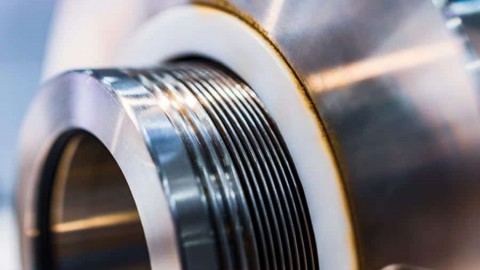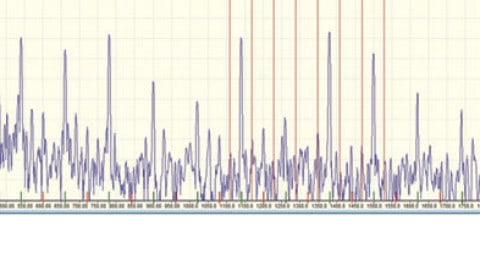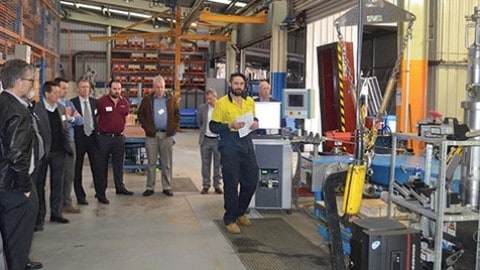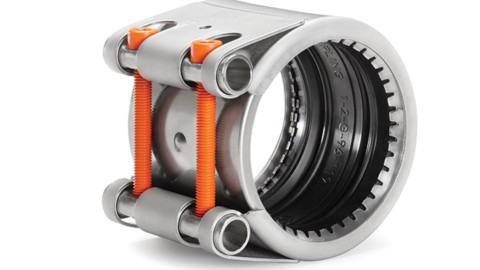Part Two : Suction Specific Speed
By Ron Astall, United Pumps Australia
In our last discussion we looked at what happens when a pump is operated in an off design condition; in particular; low flows. See Fig 1.
To recap, Fig 1 is generalised but provides a convenient overview of the symptoms associated with low flow operation issues such as:
• Increased internal turbulence
• Recirculation
• Increased pressure fluctuations
• Increased vibration due to the above
• Increased axial thrust – depending on pump hydraulic balance method
• Increased radial thrust; particularly with single volute casings
• Temperature rise due to high internal energy loss
In this article we will look at the parameter “Suction Specific Speed” (NSS) and how it influences low flow stability in a centrifugal pump.
Flow reversal and vortexing at low flow
Again, from our last discussion, Fig 2 shows a simplified representation of smooth flow at BEP versus the sort of flow disturbances that occur at reduced flow.
The degree of turbulence and associated vibration and buffeting depends on the hydraulic design and on the energy levels in the pump. The effects are generally worse for impellers with relatively large entry diameters. In larger higher energy pumps, vortexing (recirculation) can be so severe that cavitation like effects ensue.
“Suction Specific Speed” (NSS) is a design parameter that can be used to predict how susceptible a pump may be to recirculation and instability at low flows and also at high flows.
NSS gives an indication of the priority given to suction performance for a given impeller.
It is calculated as follows :
Where N is the running speed in rpm, Q is the flow per impeller eye at best efficiency and using the NPSHR at best efficiency flow.
Pumps designed for very Low NPSH
For a given flow, a higher value of NSS denotes improved suction performance (low NPSHR). Fig 3 shows the typical variation between a low NSS impeller and a high NSS impeller. The high NSS impeller has a much larger eye diameter, which reduces velocities and thus entry losses for improved NPSHR.
Trade Offs
Unfortunately, by virtue of this larger eye diameter, this type of impeller is much more prone to flow instability and recirculation when operating at flows away from best efficiency. Considerable research has shown that the range of stable operation is dramatically reduced at higher values of NSS. This is shown graphically in the hydraulic stability guidelines in fig. 4 (US units).
The primary problem created is recirculation which can occur at the pump inlet and at the outlet of the impeller at partial flows and, less frequently, at high flows.
This recirculation can produce high vibration levels, surging, axial shuttling of the shaft and mechanical damage to the impeller and casing. When severe at low flows, recirculation cavitation like damage will be evident on the pressure (non visible) side of the impeller eye vanes.
This should not be confused with classic cavitation damage due to inadequate NPSHA which will appear on the visible low pressure side of the impeller vanes. The noise from recirculation will be similar to cavitation noise but is more random in character. Typically, recirculation noise will reduce as the flow is increased, whilst classic cavitation noise will normally increase with higher flows. These problems will impact on other areas of the pump affecting the reliability of seals and bearings in particular.
Research by J. L. Hallam, studying 480 pumps and 1881 failures over a five year period in the refining industry concluded that pumps with high values of NSS (above 12,800 in metric units or 11,000 in US units) had a failure rate approximately double that of lower NSS pumps.
This has resulted in many Oil Industry specifications applying arbitrary limits on NSS.
Overall, this is not a bad thing, but it is important to remember that it was a statistical survey and such an arbitrary approach may reject a few perfectly good pumps that have tested out as smooth units despite having a high NSS. It is also important to remember that a well selected pump with a higher value of NSS will still be a better proposition than a pump with low NSS selected near minimum flow.
The benefit of this knowledge is as a tool to predict the likely NSS requirement for the pumps at the system design stage. This gives the designer the option to raise vessels etc. if it looks like the original system NPSHA will result in the need for pumps with a narrow hydraulic stability range.
Impact on Minimum Flow
Most commercially available pumps now comply with the upper limit of NSS as a matter of routine, but there may be some pumps in the field with high numbers for this parameter due to suction constraints. Pumps with a High vale of NSS will probably be much more sensitive to low flow operation and additional care will be required, such as setting higher minimum flow values for these units. ■
Next article: Are your pumps running too slowly?




















